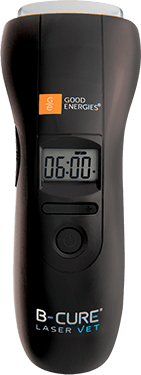Facial Paralysis in Dogs: Causes and Treatments
Dog facial paralysis consists of a dog losing its ability to move some parts of its face. Although facial paralysis in people means they may be suffering from brain trauma, things are not like that with pets.
This condition happens when a dog’s facial nerve malfunctions, and since that nerve is the one in charge of coordinating head movements, it makes it difficult for it to move its face. While this problem is not that dangerous when it strikes lightly, your pet may develop more severe health issues if you don’t treat the condition properly.

Do you think your dog may be suffering from facial paralysis? You should read this page. Here, you can learn the most common causes of this problem, how to notice it, and how to treat it properly.
Regardless of that, blog posts are not a substitution for vets, so don’t forget to take your dog to a vet before trying anything to help it.
Signs That My Dog May Be Suffering from Facial Paralysis
It’s difficult to know if your dog is suffering from facial paralysis if you’ve never seen an animal with this condition. However, there are some things you can notice to see if your dog is facing facial paralysis or any other disease.
These are the main signs your dog may be suffering from this issue:
- Excessive drooling
- Noise deviation
- Dry eye
- Your dog can’t lift parts of its face.
- Your dog can’t keep food in its mouth or eat properly.
Once you know these symptoms, it’s easier to notice the problem that bothers your dog. It’s impossible for you not to at least notice your dog is suffering from something since dogs with facial paralysis change their face completely, as they can’t move part of it.
When it comes to how they look, dogs with facial paralysis often have a “dropped” appearance similar to how people look after they suffer a stroke or similar health problems. Does your dog have facial paralysis/dog stroke face? You should take it to a vet as soon as you can.
What Causes Facial Dog Paralysis?
If you have several dogs and one of them suffers from facial paralysis, it’s only natural you wonder what caused it since you don’t want the others to develop the same condition. Unfortunately, many things can cause this disease.
Most facial paralysis cases are idiopathic conditions, which means they have no traceable cause. If the vet determines your dog’s problem is not idiopathic, some of these problems may have caused it:
Infections
If your dog’s facial paralysis is not idiopathic, it’s most likely to come from a middle or inner ear infection. Since dogs’ facial nerve is close to their ears, suffering from an otitis media/interna can damage it, which is what causes the condition in the first place.
Metabolic and Endocrine Disorders
Facial nerve dysfunction is one of the main symptoms of metabolic and endocrine disorders such as hypothyroidism and diabetes mellitus, so your dog may develop facial paralysis if it suffers from one of those health conditions.
Tumors
Although this is a more dangerous case than the others on the list, your dog can suffer from facial paralysis if a tumor grows on its facial nerve or brainstem. When this happens, the tumor invades the nerve or compresses it, which keeps it from working properly.
Toxins
You should never let your dog eat raw meat since being exposed to specific toxins can make it get dog facial paralysis. The same happens with botulism and tick toxins.
How to Treat Facial Paralysis in Dogs
There’s not a specific or permanent treatment assigned to help dogs suffering from facial paralysis, so what works for some dogs may not work for others.
You should ask your vet to tell you which treatment is best for your pet, but if you want to get ready to help your dog beforehand, read some of the most effective treatments against facial paralysis in dogs:
Lubricate Its Eyes
Lubricating your dog’s eyes with artificial tears protects its cornea and keeps the dry eye from getting any worse, so try it if your dog has any trouble blinking. We recommend you do this every four to six hours.
Massage Your Dog’s Affected Area
Your main goal when treating facial paralysis in dogs is to make the nerve regenerate or go back to working as it should. People can try to promote nerve regeneration by massaging and heating their dog’s affected muscles for 15 minutes twice or three times a day.
Laser Therapy
Laser therapy is also of great help when someone wants their dog to recover from facial paralysis since it promotes nerve regeneration, reduces inflammation, improves blood circulation, and boosts cellular metabolism.
Wrapping Up – What to Do If Your Dog Suffers from Facial Paralysis
The first step to help dogs suffering from facial paralysis is to take them to the vet. Once they tell you how severe things are, you can try some of the treatments named on this page.
If you are interested in hiring laser therapy services to help your dog, don’t hesitate to call us! We are more than willing to tell you everything you need to know about how this process goes. You can find more information about it on our website.




